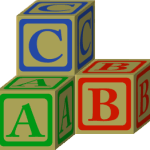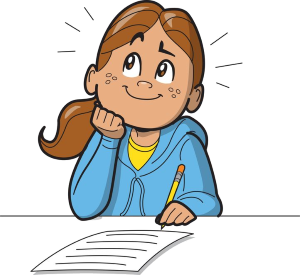Wayne the Stegosaurus
Meet the stegosaurus, Wayne.
He doesn’t have the biggest brain.
He’s long and heavy, wide and tall,
but has a brain that’s extra small.
He’s not the brightest dinosaur.
He thinks that one plus one is four.
He can’t remember up from down.
He thinks the sky is chocolate brown.
He wears his bow tie on his tail
and likes to eat the daily mail.
When playing hide-and-seek he tries
to hide by covering his eyes.
He thinks that black is really white.
He’s sure the sun comes out at night.
He thinks that water grows on trees
and when it’s hot he starts to freeze.
He’s happy when he’s feeling ill.
He likes to dance by standing still.
And when it’s time to go to bed,
he puts bananas on his head.
He thinks his name is Bob, not Wayne,
but that’s what happens when your brain
(although you’re big and brave and spiny)
is very, very, very tiny.
–Kenn Nesbitt










